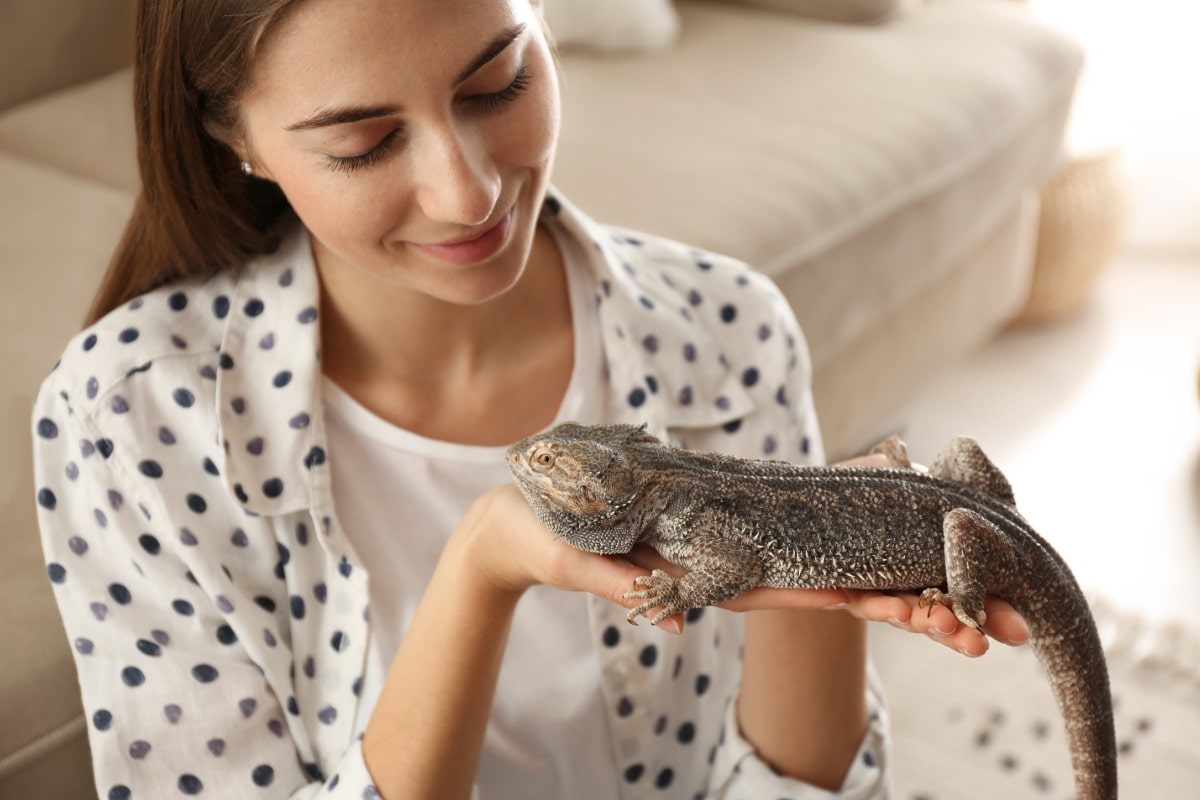7 Tips for Moving With an Exotic Pet

Moving homes can be a stressful experience, especially if you're moving with an exotic pet, such as a snake or leopard gecko. However, there are plenty of ways to mitigate the stress of moving with an exotic pet. Here are seven tips.
Tip #1: Research exotic pet laws before the move
According to Everything Reptiles Say, you should research the laws and regulations concerning exotic pets before renting a home in that area. Many states and countries have an extensive list of animals they consider ‘exotic’ and have strict regulations regarding the pets specified.
Researching these laws will prevent you from entering into a legal situation that could put your pet in danger. The United States Department of Agriculture offers a comprehensive tool for checking exotic pet laws when traveling from the U.S. to another country, when traveling to the U.S. from another country and when traveling between states.
Tip #2: Crate train your pet
When moving with an exotic pet, you’ll likely need to transport it in a different cage than it’s used to. A leopard gecko should typically be housed in a 20-gallon vivarium with plenty of hideouts, tank decorations and coconut fiber substrate. When moving a leopard gecko you will want to use a much smaller tank (e.g. 5 gallon) with moist paper towels or reptile carpet in the bottom. The 5 gallon tank shouldn't contain any live-substrate, decorations, plants, hideouts or dishes.
Use these guidelines when preparing your pet’s crate for travel:
- Cushion the cage with towels or a small amount of bedding (such as wood chips or coconut fiber) from the pet’s permanent enclosure.
- Remove any decorations that could shift during the move and hurt your pet.
- Introduce your pet to the crate well before the move. Allow them to explore the carrying cage in increasing intervals leading up to the move in order to avoid unnecessary stress.
Tip #3: Bring the pet in for a check-up
In order to keep your pet healthy during and after the move, schedule an appointment with your veterinarian before the big day. Because moving can be a stressful experience for a pet, it’s important to ensure it’s in good health as the stress of moving will likely make any pre-existing conditions worse.
If you are unable to get an appointment, conduct a short survey of your pet’s health by taking note of its eating and drinking habits, sleep patterns, level of activity and general behavior.
Scheduling a check-up or observing your pet’s health before the move will make it easier to notice changes in its health and behavior afterward that could be potentially life-threatening.
Tip #4: Prepare the permanent habitat prior to arrival
Prepare and set up your pet’s permanent enclosure in the new rental home before you arrive. While this may be difficult, especially if you're undergoing a long-distance move, having the permanent cage set up beforehand will reduce the time your pet spends in its travel cage and shorten the amount of time it’s under a great deal of stress.
You should attempt to replicate both the interior and exterior layout of the cage in your previous home as closely as possible in your new one. When choosing where to place your exotic pet’s cage, look for a location within the house that resembles the location it was placed in the previous home. If your pet was previously kept in a quiet spare bedroom or office, it should be placed in a similar place in the new home.
Tip #5: Coordinate the move around your pet’s schedule
While this may be difficult to accomplish, try to coordinate your move around your pet’s sleeping schedule to avoid disrupting its usual routine. This will greatly reduce its stress level.
Many exotic pets, such as the leopard gecko, are primarily nocturnal, meaning they are most active at night and sleep mostly during the day. For nocturnal pets, moving during the day can disrupt their sleep schedule and induces more stress and anxiety, which can have negative effects on their health.
Tip #6: Control habitat factors during the move
In order to keep your exotic pet safe throughout the move, it’s important to control for habitat factors such as heat, moisture and light. Exotic pets, especially reptiles such as ball pythons, are very sensitive to temperature changes.
Depending on what method of transportation you use to move, there are different ways to ensure your exotic pet stays warm during the move. Controlling the temperature is easiest to do when moving by car. Warm your vehicle to an appropriate temperature beforehand, and make sure the cage is not placed in direct sunlight. If you're traveling by airplane, you can insulate your pet’s carrying cage with towels and heating packs. You can even put a small water bottle filled with hot water in their cage.
Tip #7: Resume your normal routine
After moving with an exotic pet, it's important to resume your pet's usual routine as soon as you arrive in your new rental home to decrease stress and help it feel more comfortable. Resuming a routine will also help your pet return to its normal sleeping and feeding schedule.
Although you may not be settled in yet, feeding and playing with your exotic pet at the same time you would have in your previous home will help it feel more comfortable in its new space sooner.
Moving with an exotic pet can be stressful, but following these tips will help lessen the stress of the move and ensure that the health of your exotic pet is prioritized.
